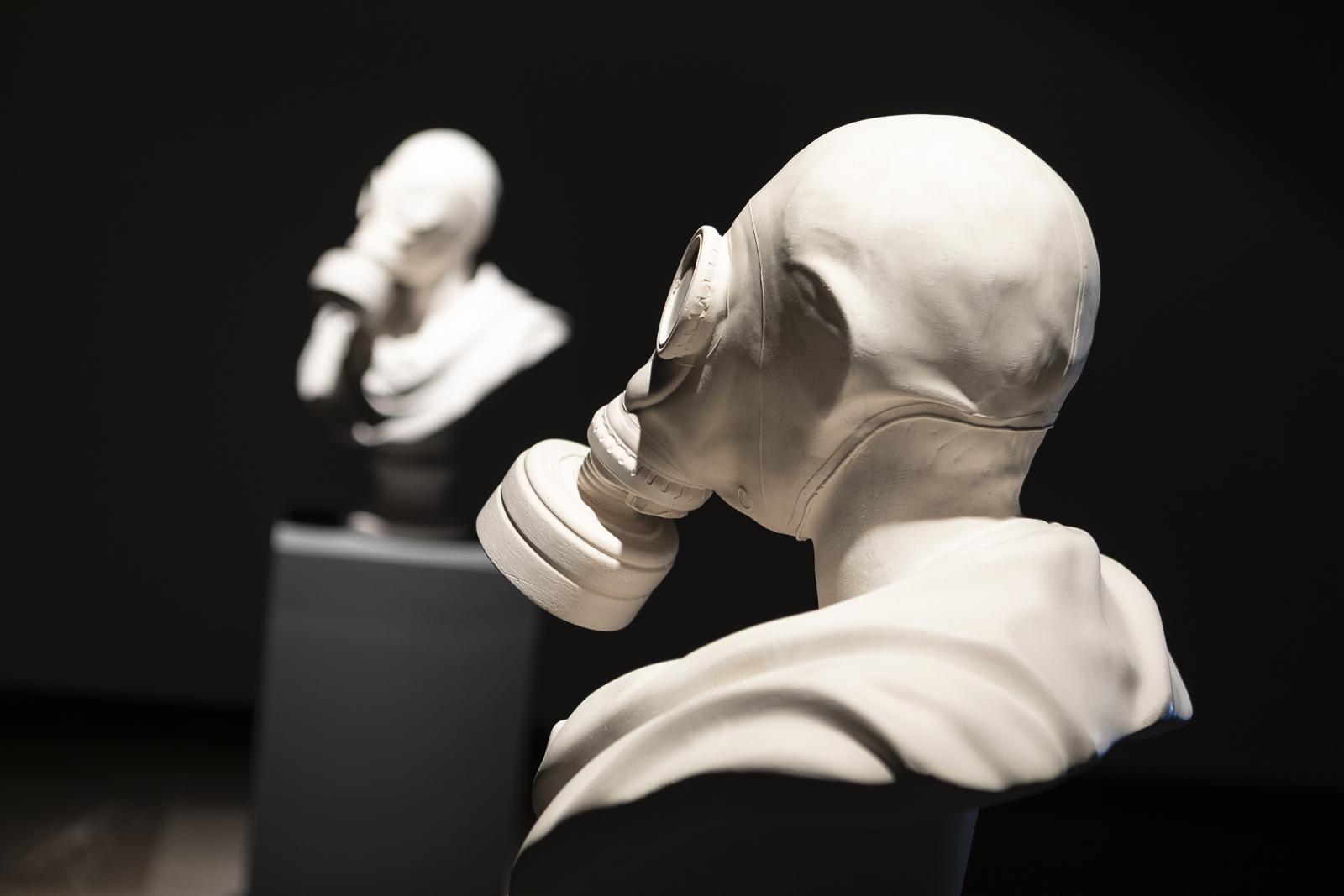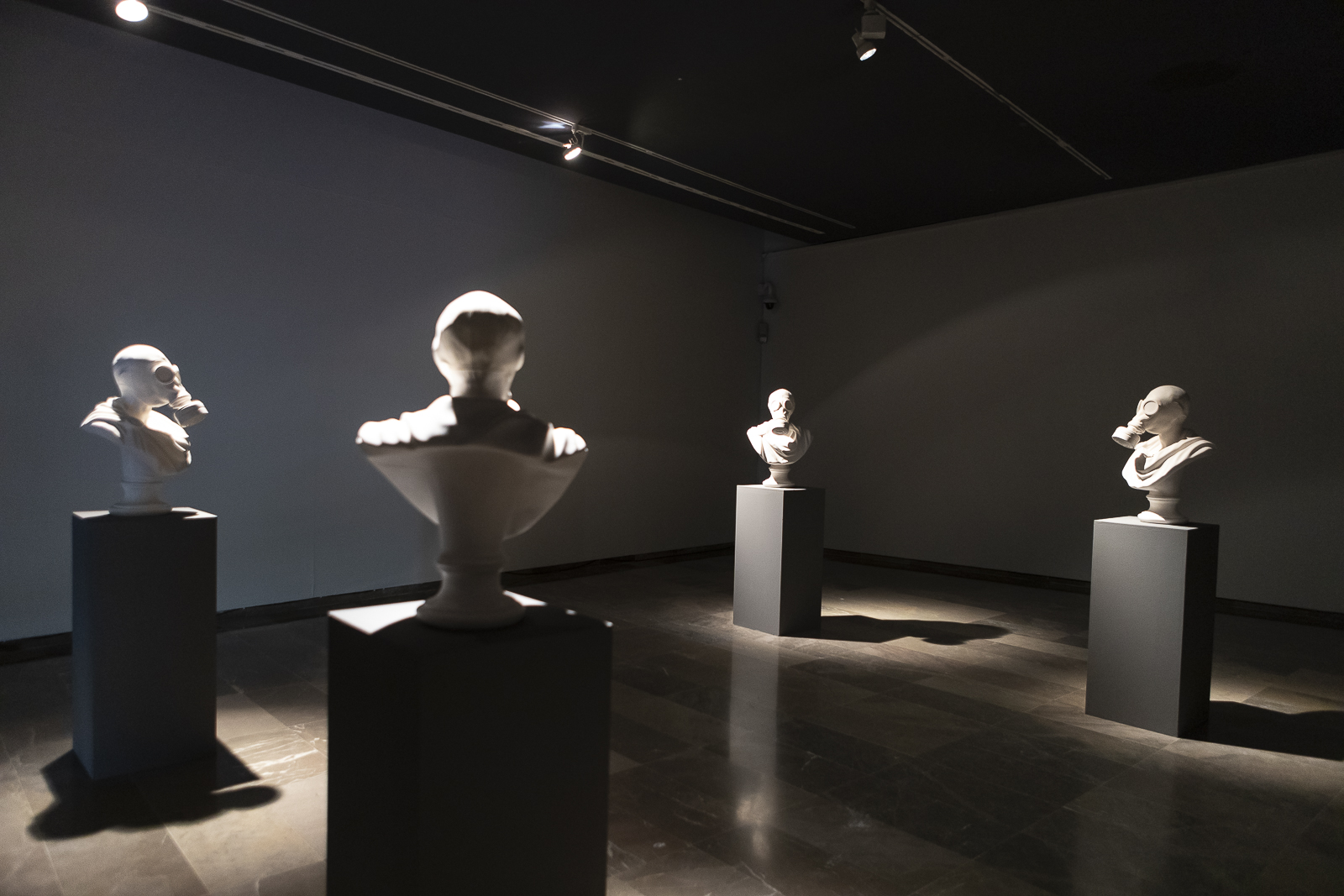CENTRE DEL CARME CULTURA CONTEMPORÀNIA
7 Marzo | 19 Mayo | 2019
Convocatoria Escletxes Producción en Investigación Artística 2018-20 | Consorci de Museus de la Comunitat Valenciana
In realtà essi sono appunto delle maschere. Son certo che, a sollevare quelle maschere, non si troverebbe nemmeno un mucchio d’ossa o di cenere : ci sarebbe il nulla, il vuoto.
Pier Paolo Pasolini
THE DISAPPEARANCE OF FIREFLIES
As Giorgio Agamben so brilliantly puts it, contemporaneity can only be revealed in the density of intertwined temporalities, in the disjunction and anachronism from which our present moment is perceived. Perhaps in this way a possible redemption may appear: “it is as if this invisible light that is the darkness of the present cast its shadow on the past so that the past, touched by this shadow, acquired the ability to respond to the darkness of the now”.
In coherence with this idea, narrative in the work of Josep Tornero favours the idea of “assembly” over that of “series”, in order to establish multiple ways of relating in a Warburgian manner. In addition, he carries this out by
going into detail on the common elements in his previous work: the undulation and movement in the momentary, which are always oriented towards the objective of signalling a survival of the image. In the words of the artist himself: “a survival by way of fleeting glints, […] a succession of images or dislodged stories that, like a collage, could incorporate a sustained dialogue with ourselves, a last glimpse that precedes the disappearance”.
The viewer thus witnesses images that become spectres of memory, places where everything happens twice in order to activate a common space that belongs to us as a collective. In effect, each painting constructs a shared imaginary that has as its coordinates a frequent lexicon in the social practices of contemporary art: trauma, pain, memory, community, violence … and that every society tends to hide.
PRESENTACIÓN DEL PROYECTO
El Centre del Carme presenta ‘La desaparición de las luciérnagas’ el último trabajo del artista valenciano Josep Tornero. Se trata de una propuesta ‘site-specific’ para este espacio como resultado de la convocatoria Escletxes, de producción y apoyo a la investigación del Consorci de Museus. A partir de un inventario de imágenes de diversos registros técnicos como fotografía, vinilos o pinturas, el artista trae al presente imágenes iconográficas de la historia del siglo XX. ‘La desaparición de las luciérnagas’ es la plasmación de una investigación en la que Tornero lleva trabajando alrededor de dos años y donde se cuestiona la contemporaneidad de la imagen, rescatando reflejos del pasado, retrotrayéndolos al presente.
Tornero explica que su exposición “está inspirada en un texto de Pier Paolo Pasolini de 1975 (el artículo de las luciérnagas), sobre la metáfora de la luciérnaga y cómo los exceso de la sociedad de la información son como un fogonazo que no dejan ver la luz de la cultura. Esto es aprovechado por el poder para ejercer su dominación”.
La exposición es una propuesta pensada a partir de un inventario de imágenes realizado a través de diversos registros técnicos: vinilos, impresiones sobre papel fotográfico y pinturas, una sucesión de imágenes o historias desanidadas que, a modo de collage, puede incorporar un diálogo sostenido con nosotros mismos.
El artista trae al presente imágenes iconográficas de la historia del siglo XX. ‘La desaparición de las luciérnagas’ hace referencia al paso del tiempo y a la construcción del presente. Como explica Pedro Medina en el texto del catálogo “el espectador presencia pues imágenes que se vuelven espectros de la memoria, lugares donde todo acaece una segunda vez para activar un espacio común que nos pertenece como colectivo. Cada cuadro construye un imaginario compartido que tiene como coordenadas un léxico frecuente en las prácticas sociales del arte contemporáneo: trauma, dolor, recuerdo, comunidad, violencia… y que toda sociedad tiende a ocultar”.
Coherentemente con esta idea, la narración en la obra de Josep Tornero privilegia la idea de “montaje” sobre la de “serie”, para establecer warburgianamente múltiples maneras de relación. Además, lo lleva a cabo profundizando en elementos comunes en su trabajo anterior: lo ondulante y el movimiento en lo fugitivo, que se orientan siempre al objetivo de señalar una supervivencia de la imagen. En palabras del propio artista: “una supervivencia a modo de destellos fugaces, una sucesión de imágenes o historias desanidadas que, a modo de collage, pueda incorporar un diálogo sostenido con nosotros mismos, un destello último que precede a la desaparición”.
THE DISAPPEARANCE OF FIREFLIES
As Giorgio Agamben so brilliantly puts it, contemporaneity can only be revealed in the density of intertwined temporalities, in the disjunction and anachronism from which our present moment is perceived. Perhaps in this way a possible redemption may appear: “it is as if this invisible light that is the darkness of the present cast its shadow on the past so that the past, touched by this shadow, acquired the ability to respond to the darkness of the now.”
In coherence with this idea, narrative in the work of Josep Tornero favours the idea of “assembly” over that of “series”, in order to establish multiple ways of relating in a Warburgian manner. In addition, he carries this out by going into detail on the common elements in his previous work: the undulation and movement in the momentary, which are always oriented towards the objective of signalling a survival of the image. In the words of the artist himself: “a survival by way of fleeting glints, […] a succession of images or dislodged stories that, like a collage, could incorporate a sustained dialogue with ourselves, a last glimpse that precedes the disappearance.”
The viewer thus witnesses images that become spectres of memory, places where everything happens twice in order to activate a common space that belongs to us as a collective. In effect, each painting constructs a shared imaginary that has as its coordinates a frequent lexicon in the social practices of contemporary art: trauma, pain, memory, community, violence … and that every society tends to hide.
PROJECT PRESENTATION
The Centre del Carme presents The Disappearance of Fireflies, the latest work by Valencian artist Josep Tornero. It is a ‘site-specific’ proposal for this space resulting from the Escletxes call for production and research support by the Consorci de Museus. Based on an inventory of images from various technical registers such as photography, vinyl, or paintings, the artist brings to the present iconographic images from the 20th century. ‘The Disappearance of Fireflies’ is the embodiment of research Tornero has been working on for around two years, questioning the contemporaneity of the image by rescuing reflections from the past and bringing them back to the present.
Tornero explains that his exhibition “is inspired by a text by Pier Paolo Pasolini from 1975 (the fireflies article), about the metaphor of the firefly and how the excesses of the information society are like a flash that prevents us from seeing the light of culture. This is exploited by power to exercise its domination.”
The exhibition is a proposal conceived from an inventory of images carried out through various technical registers: vinyl records, photographic prints, and paintings, a succession of disjointed images or stories that, like a collage, can incorporate a sustained dialogue with ourselves.
The artist brings to the present iconographic images from the 20th century. ‘The Disappearance of Fireflies’ refers to the passage of time and the construction of the present. As Pedro Medina explains in the catalogue text, “the viewer witnesses images that become spectres of memory, places where everything happens a second time to activate a common space that belongs to us as a collective. Each painting constructs a shared imaginary that has as its coordinates a frequent lexicon in the social practices of contemporary art: trauma, pain, memory, community, violence… and that every society tends to hide.”
Consistent with this idea, the narrative in Josep Tornero’s work privileges the idea of “assembly” over “series” to establish Warburgian multiple ways of relating. He does this by delving into common elements in his previous work: the undulating and momentary movement, which are always oriented towards the objective of indicating a survival of the image. In the artist’s own words: “a survival by way of fleeting glints, a succession of images or dislodged stories that, like a collage, could incorporate a sustained dialogue with ourselves, a last glimpse that precedes the disappearance.”


Josep Tornero.The Disappearance of the, 2018.

La desaparición de las luciérnagas. Centre del Carme. Valencia, 2019.

La desaparición de las luciérnagas. Centre del Carme. Valencia, 2019.

La desaparición de las luciérnagas. Centre del Carme. Valencia, 2019.

La desaparición de las luciérnagas. Centre del Carme. Valencia, 2019.

La desaparición de las luciérnagas. Centre del Carme. Valencia, 2019.

La desaparición de las luciérnagas. Centre del Carme. Valencia, 2019.

La desaparición de las luciérnagas. Centre del Carme. Valencia, 2019.

La desaparición de las luciérnagas. Centre del Carme. Valencia, 2019.

Josep Tornero. Helter Skelter, 2019.

La desaparición de las luciérnagas. Centre del Carme. Valencia, 2019.

La desaparición de las luciérnagas. Centre del Carme. Valencia, 2019.

La desaparición de las luciérnagas. Centre del Carme. Valencia, 2019.

La desaparición de las luciérnagas. Centre del Carme. Valencia, 2019.

Josep Tornero. A Date With Elvis, 2018.

Josep Tornero. The Kids, 2019.

Josep Tornero. Camino a Damasco o La conversión de Saulo, 2018.

Josep Tornero. Falenas, 2018-19.

Josep Tornero. Nuclear Family, 2018.